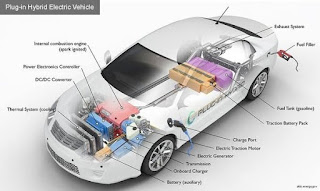Electricity and gasoline combine to power a hybrid vehicle, rising fuel efficiency and lowering oil dependence. Using the use of electricity and kinetic energy (produced by the car when it moves), a vehicle can drive down the road making use of considerably significantly less fuel. While the ultimate goal is usually to have these cars be 100 percent fueled by electrical energy, hybrids have gone a long way in advertising fuel conservation.
What Is a Hybrid?
A hybrid, also called a hybrid-electric vehicle (or HEV), combines a gasoline engine having a battery-powered electric motor to enhance fuel efficiency. Hybrids normally store energy created by the car's motion into the battery, along with the electrical engine gives a power increase for the duration of acceleration, lane passing or hills. Hybrid cars typically usually do not idle, and rather shut on and off automatically when the car stops and goes, therefore conserving energy.Full Versus Mild
In the hybrids presently in the market, you can find two types: complete and mild. Each the gasoline engine and electric motor power the wheels of a complete hybrid, which enables the gasoline engine to shut off when the car idles. Toyota, Lexus and Ford use the full-hybrid technology. In mild hybrids, the electric motor boosts the gasoline engine when it demands a lot more power, resulting within the automatic shut-on/shut-off feature recognized in some hybrids. Basic Motors is most known for utilizing mild hybrid technology.Batteries
Kinetic energy, or the energy of motion, is used to keep the electric battery charged on the hybrid. When the driver utilizes the brakes, this sends a charge for the car's battery. Some hybrids garner energy in the gasoline engine by attaching a spinning electrical generator around the device. Contrary to myth, hybrid vehicles usually do not need to be plugged in for the battery to become completely charged. Batteries are designed to last the whole life of the vehicle, or 150,000 to 200,000 miles.Gasoline Engine
The gasoline engine would be the part in the hybrid that resembles its conventional counterpart, the gas-powered vehicle. It is just like 1 you'd uncover on a traditional car, except that it's smaller, hence requiring much less fuel to function.Electric Motor
Before hybrids, electric motors were generally used to power smaller devices such as fans, computer gear and printers. By means of what is generally known as "regenerative braking," braking and accelerating generate a steady stream of energy. Using the help on the car's wheels, the motor functions as a generator, and energy normally wasted from braking and coasting are harnessed.Considerations
While the hybrids are a huge step forward for our nation's fuel economy, they still use gasoline, a finite resource. In addition, the cars do cost substantially more than their gasoline-fueled counterparts. The electric battery inside the vehicle adds considerable weight to the hybrids, which lowers a vehicle's fuel efficiency. Plug-in hybrids (PHEVs), that are now in the market, employ an even bigger batter pack that drastically reduces the require for gasoline. Extra power could be harnessed by plugging the vehicle into an outlet, therefore the name "plug-in" hybrid.See also
Tags
Cars
